Whenever we have extra time on a weekend morning, we love to make a big breakfast. Things can be hectic during the week, and we may only have time for a grab an on-the-go breakfast like muffins, or we slurp down a bowl of cereal before rushing out the door. But when the weekend rolls around…it’s French toast for everyone! We’ve been perfecting this recipe for a while now and can confidently say that this is seriously the best French toast ever. We like to crank things up a notch by using challah, brioche, or Texas toast rather than plain old white bread. It’s especially delicious when it’s covered in berries, syrup, and whipped cream. Top it with whatever you like, and be prepared to serve up a second batch.
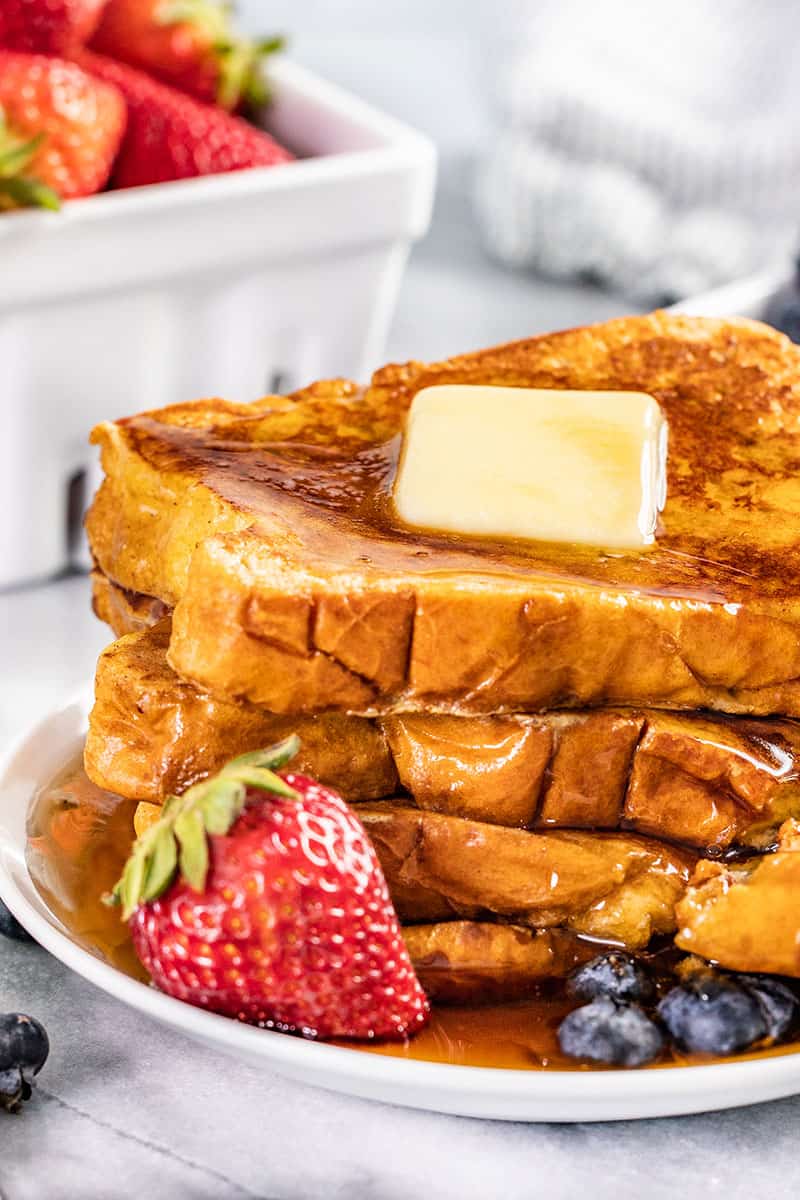
Ingredient Breakdown & Substitutions
Let’s explore how each ingredient contributes to the dish and offer alternatives for dietary preferences and flavor variations. This section ensures your French toast is not only delicious but also tailored to suit everyone at your table.
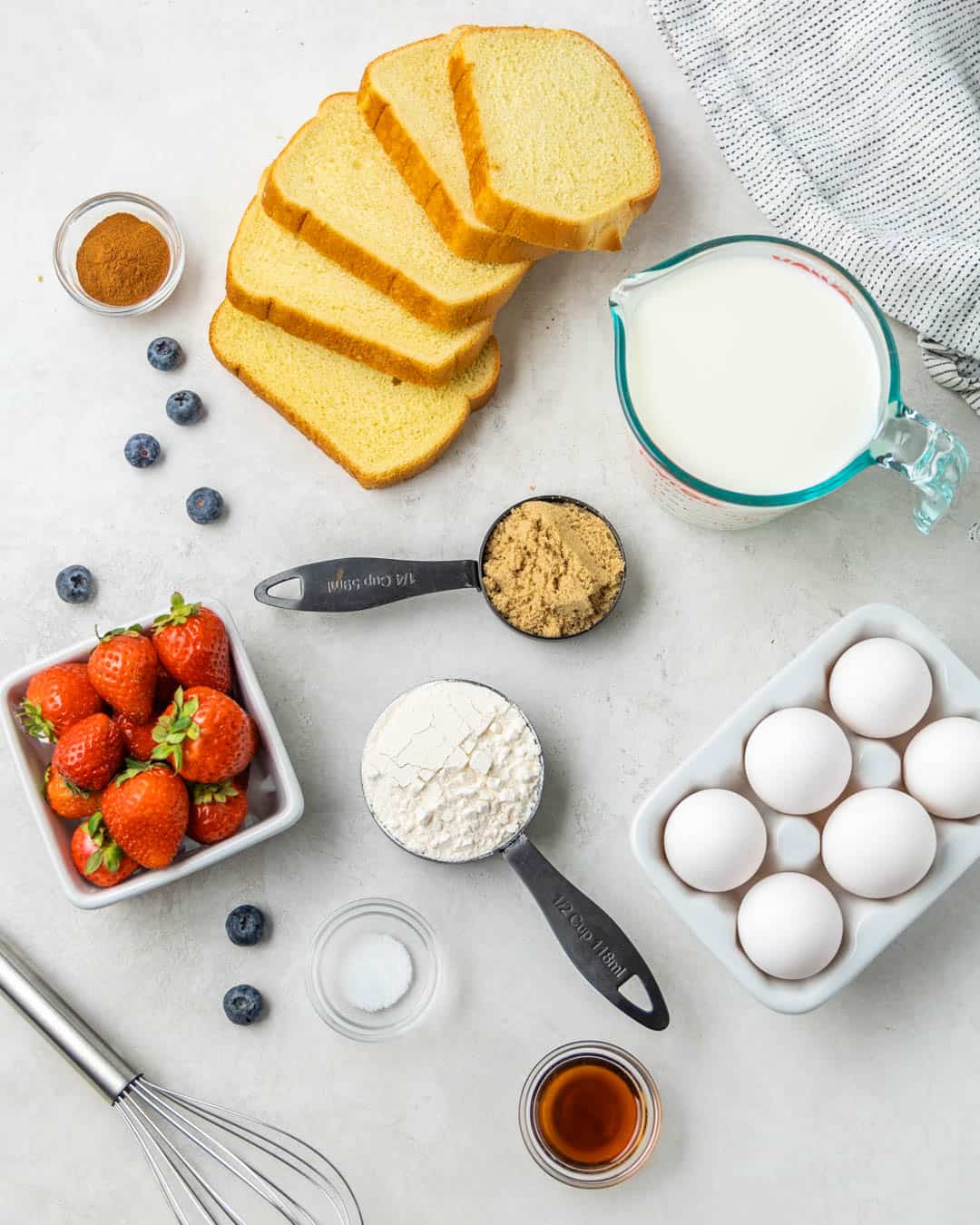
- Milk: Whole milk gives a creamy richness, but for a lighter version, use skim milk or a plant-based alternative.
- Eggs: Essential for binding and richness. For an egg-free version, consider flax eggs, mashed banana, or commercial egg replacers.
- Brown Sugar: Adds sweetness and a hint of caramel flavor. Honey or maple syrup are good alternatives.
- All-Purpose Flour: Helps thicken the batter. For a gluten-free version, use a cup-for-cup gluten-free flour blend. Fora healthier version, replace half of the all-purpose flour with whole wheat flour.
- Ground Cinnamon: Provides warmth and spice. Nutmeg or pumpkin spice can be used for variation.
- Vanilla Extract: Enhances flavor. Almond extract is a nice alternative.
- Salt: Balances sweetness.
- Bread: Challah, brioche, or Texas toast are ideal for their thickness and texture.
Using substitutions may affect final taste and texture.
Frequently Asked Questions
Thick slices of challah, brioche, or Texas toast work best as they soak up the egg mixture without falling apart.
You sure can! If you’re looking to make this breakfast recipe a bit lighter, you can substitute 2 egg whites for every egg.
Yes, you can mix the batter the night before and refrigerate it.
While a griddle is a great option for making French toast, you can simply opt for a skillet. We recommend using non-stick or well-seasoned cast iron.
Visual Guide to Making French Toast
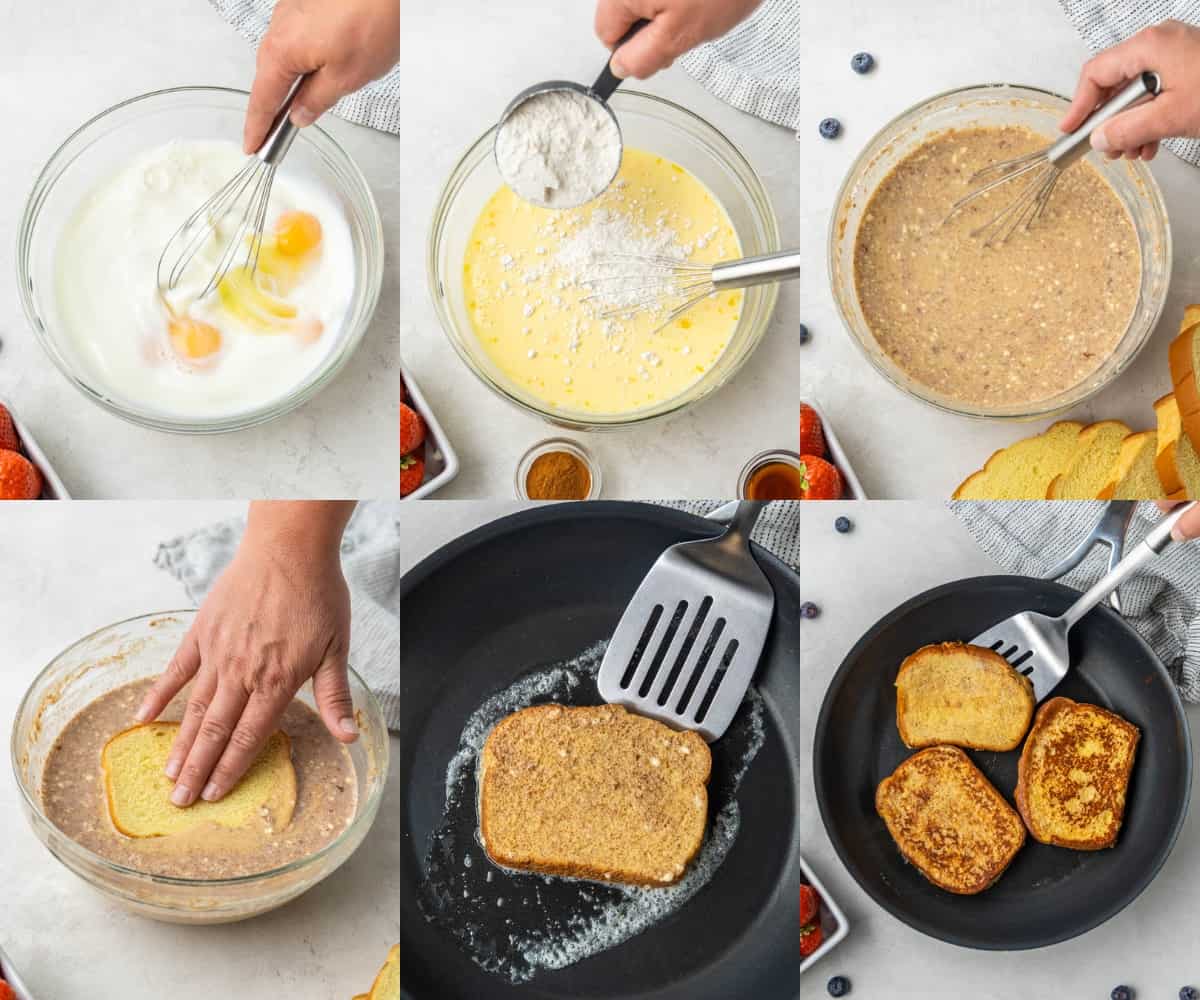
Seasonal Variations
Adapt your French toast to the seasons:
- Fall Flavors: Mix in pumpkin spice or top with caramelized apples.
- Summer Treat: Top with fresh berries, lemon curd, or a dollop of whipped cream.
Serving Suggestions
Serve your French toast with your favorite syrup, fresh berries, or a dollop of whipped cream on top.
Pro tip: For a French toast that will absolutely knock your socks off, use our recipe for Liquid Cinnamon Roll Syrup. It’ll blow your mind!
Troubleshooting
- Soggy French Toast: Ensure your pan is hot enough and don’t oversoak the bread.
- Burning: Lower the heat. The pan shouldn’t be too hot.
- Uneven Cooking: Cook in batches to avoid overcrowding the pan.
- Bland Flavor: Make sure to use enough vanilla and cinnamon, and adjust sugar to taste.
Tips From the Chef
- Let the bread slices sit out for a bit to dry; slightly stale bread absorbs the egg mixture better without becoming too soggy.
- Whisk the batter thoroughly to ensure a smooth, lump-free texture.
- Preheat your pan or griddle to the right temperature before adding the bread.
- For an extra rich taste, try adding a splash of heavy cream to the batter.
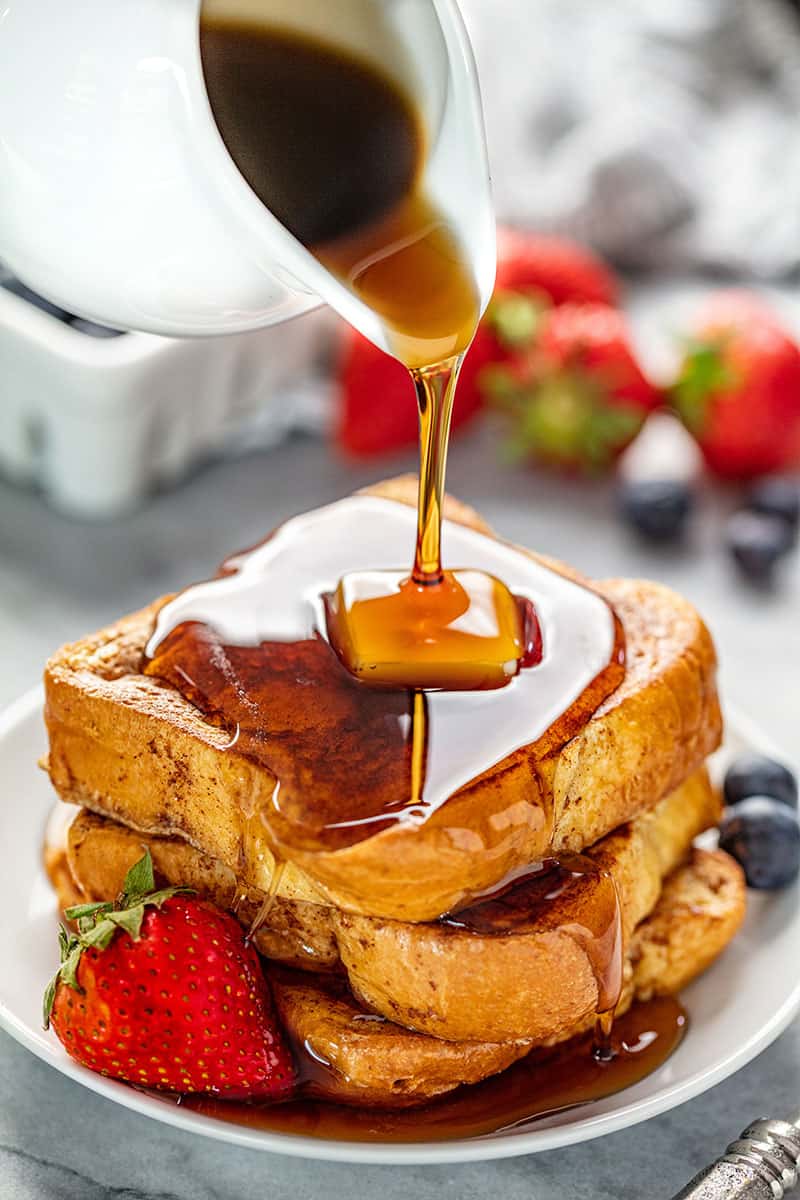
Storage, Freezer & Reheating Instructions
Store any leftover French toast in the fridge in an airtight container for 4 to 5 days. Reheat in the toaster or microwave in 30-second intervals until warmed through.
To freeze, allow the French toast to cool completely. Then, transfer to a parchment-lined baking sheet, stacking the toast as needed by placing parchment paper in between each layer. Freeze until solid before placing into an airtight container to freeze for 1 to 2 months.
More Favorite Hot Breakfast Recipes
Best Homemade Cinnamon Rolls Ever
2 hrs 14 mins
Loaded Hash Brown Breakfast Casserole
1 hr 10 mins
Perfect Blueberry Pancakes
15 mins
Watch the video below where Rachel will walk you through every step of this recipe. Sometimes it helps to have a visual, and we’ve always got you covered with our cooking show. You can find the complete collection of recipes on YouTube, Facebook Watch, or our Facebook Page, or right here on our website with their corresponding recipes.

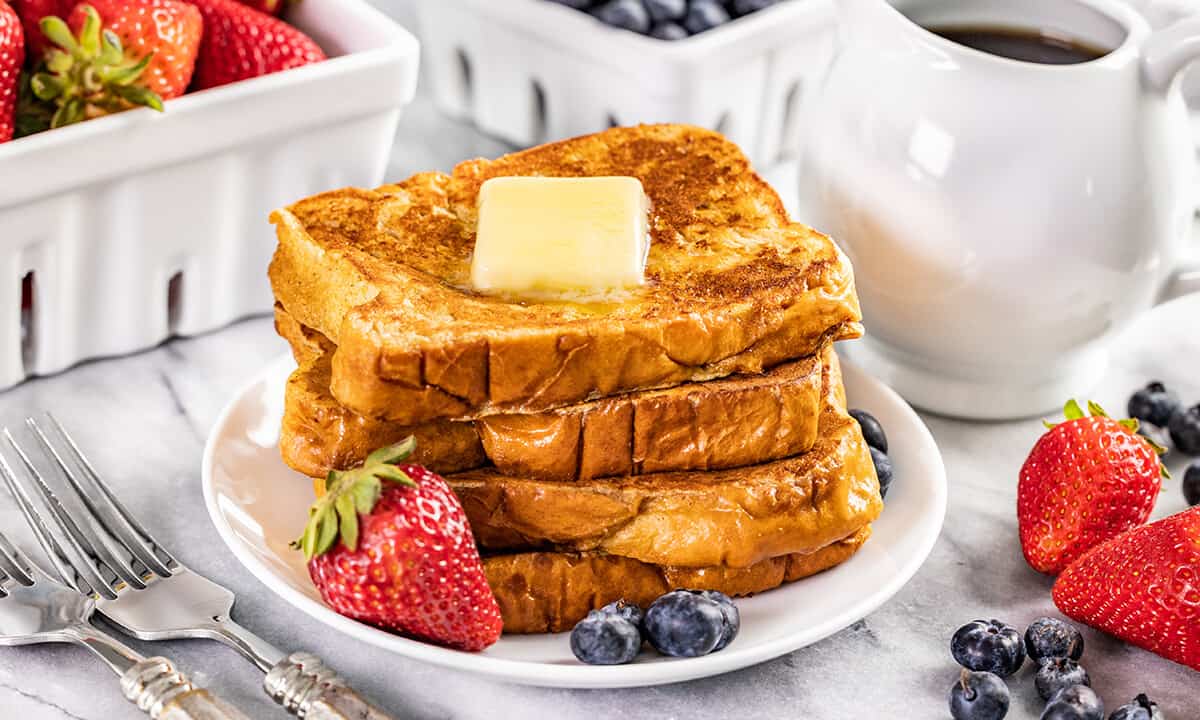
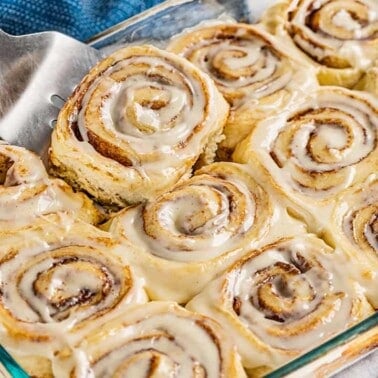


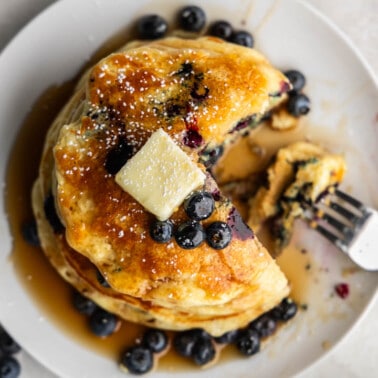
Tasted great! I’m teaching a teenage boy to cook. He chose this as his first recipe. Our syrup stayed foamy but tasted yummy! Thanks!
Yummy! My grandkids and family loved it! My granddaughter said Don’t add anything to it, it’s perfect!
We’ve made this several times. It really is the best French toast ever
I love that you have a slider bar for the number of servings. It’s just me and hubby, so we could never eat 16 slices! Thank you for adding this feature.
I thought mine was good. Yours is excellent!
The best French toast for sure. You can’t go wrong with any of Rachel’s recipes!!!
As are all the recipes I have tried of yours, this one is a keeper. Yum.
Very tasty, would def use again
Brown sugar and flour are ingred I never used in French toast, nice addition. Didn’t know I could adjust serving size but will use tool next time. TY
This really is the Best French Toast ever! No more sogginess. As always, good flavor comes through and the bread consistency is perfect. Thank you!
I LOVE!!… French toast, especially with wheat bread. But, I made mine plain & somple, just milk & eggs, enough for two people. (Daughter & I).. how many eggs, milk, etc would I need to make for two people. I love your video demos and the recipes you shares. Cooking is a passion of mine, not as good as you, I really have watch my diet, due to diabetes, weight gain, lactose intolerance, etc… Thank-you much. Oh, you don’t look like a old hag, you are very beautiful, your husband is lucky man… ❤
You can touch on the servings indicator and change it to 2 to get your answer.
Would this be okay to make a French toast bake? Assemble night before, refrigerate and bake next morning?